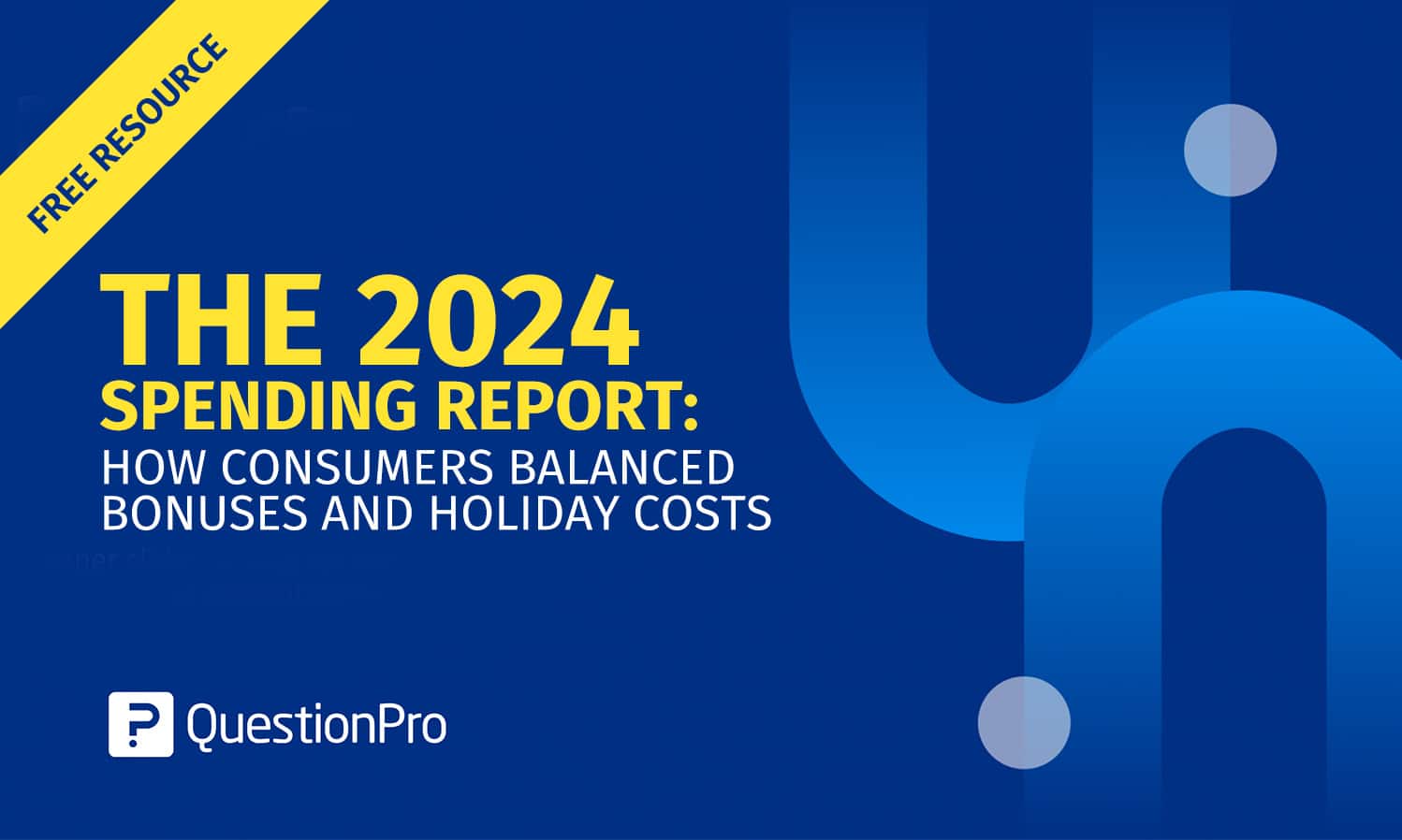
For many Americans, the end-of-year bonus was either small or nonexistent in 2024. We survey 999 U.S. respondents, finding out that 55% of workers did not receive a bonus last year.
Among those who did, nearly 40% received $1,000 or less, and only a small percentage (5.6%) received over $10,000. Let’s explore the insights we gain and how they’re relevant.
Key Findings
- Bonuses were limited: 55% of workers did not receive a bonus in 2024, and nearly 40% of those who did received $1,000 or less.
- Financial priorities shifted: More workers allocated their bonuses toward paying bills (+1%) and less toward discretionary spending (-2%).
- Holiday shopping habits adjusted: 70% of consumers spent the same or more compared to the previous year, with many citing rising costs and the importance of holiday traditions.
- Cost concerns dominated: 41% of shoppers worried about overspending, and 32.5% said having more money would ease their concerns.
Bonuses Were Limited, and Most Were Modest
Bonuses provided a financial boost for some, but most recipients reported that their 2024 bonus was about the same as previous years. However, 24.5% received a higher-than-usual bonus, offering some relief amid economic uncertainty. Workers strategically allocated their bonuses, with a near-even split between savings, debt relief, investments, and essential spending.
The share of bonuses going toward paying bills increased by 1 percentage point compared to previous years, while discretionary spending on wants dropped by nearly 2 percentage points.
The survey revealed that more than half (55%) of workers did not receive a bonus in 2024. Among the 45% who did, the majority (39.4%) received $1,000 or less, while only 5.6% received more than $10,000.
Bonus Distribution:
| Bonus Amount Received | Percentage of Recipients |
|---|---|
| $1,000 or under | 39.4% |
| $1,001 – $2,500 | 21.2% |
| $2,501 – $5,000 | 17.1% |
| $5,001 – $10,000 | 13.0% |
| $10,001 or more | 5.6% |
| Unsure | 3.7% |
While bonuses were generally consistent with past years, 24.5% of recipients saw an increase in their bonus. But most workers continued to allocate their bonuses strategically, with essential expenses taking priority.
For Those Without Bonuses, Financial Pressures Were Mounting
The majority of workers (55%) did not receive a bonus in 2024. More than half of them (51%) never receive bonuses, while 32% had not received one for several years. Nearly one-third of these individuals (31%) indicated they could have really used the extra money, underscoring financial strain.
Despite this, 28% said they were not particularly bothered by the absence of a bonus. However, frustration remained evident—17.6% felt they worked hard and deserved one, while 8.2% said their regular pay was too low to expect a bonus.
Holiday Shopping: A Balancing Act Between Joy and Cost Concerns
With bonuses being modest or absent for most, consumers had to carefully plan their holiday spending. The majority (39.1%) budgeted for shopping within the holiday months, while 28.2% saved throughout the year. However, 31% of shoppers did not make any financial plans, highlighting a mix of preparedness and impulse spending.
Despite economic challenges, 70% of consumers spent the same or more on holiday shopping journey compared to 2023. The top reason? Rising costs, cited by 38.6% of respondents. However, sentimentality also played a role—many shoppers justified their spending by emphasizing the joy of giving (22.9%) and holiday traditions (21.6%).
Meanwhile, 32% of consumers cut back on holiday spending, with the top reasons being high prices (45.3%) and personal financial strain (36.5%). Additionally, 32.1% of shoppers expressed the need to save more due to economic uncertainty, reinforcing a cautious financial outlook.
With limited financial incentives, many consumers adjusted their holiday shopping experience strategies. The majority (39.1%) budgeted specifically for holiday purchases, while 28.2% saved throughout the year. However, a notable 31% made no financial plans before shopping.
Holiday Budgeting Strategies:
| Approach | Percentage |
| Budgeting during holiday months | 39.1% |
| Year-round savings | 28.2% |
| Using work bonuses | 10.6% |
| No financial planning | 31.0% |
Spending Trends
Despite financial concerns, 70% of consumers spent the same or more compared to 2023. The main reason? Rising costs, cited by 38.6% of respondents. However, the emotional aspect of gift-giving remained significant, with 22.9% citing joy and 21.6% emphasizing holiday traditions.
On the flip side, 32% of consumers cut back on holiday spending, with high prices (45.3%) and financial strain (36.5%) as the top reasons.
What Was on the Holiday Shopping List?
Consumers prioritized clothing as their number one shopping category, followed by gift cards, personal electronics, and shoes.
Top Holiday Shopping Items:
| Item | Percentage of Shoppers |
| Clothing | 54.6% |
| Gift Cards | 45.7% |
| Personal Electronics | 25.8% |
| Shoes | 25.2% |
| Crafts & Hobbies | 21.1% |
Conclusion
Looking ahead to 2025, financial planning will likely play an even greater role in helping consumers navigate economic challenges while still celebrating important moments. Perhaps through smarter budgeting, strategic savings, or mindful spending, the resilience shown in 2024 is a testament to how individuals adapt to changing financial landscapes.
Going forward, the trend toward budgeting, saving, and prioritizing essential expenses is likely to continue. We’ve learn that americans can navigate future economic shifts while still enjoying the traditions that matter most.
With QuestionPro, you can now understand financial trends through powerful survey insights. Want to learn more about consumer behaviors and data-driven decision-making? Explore our latest reports and insights today!







